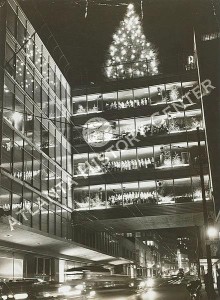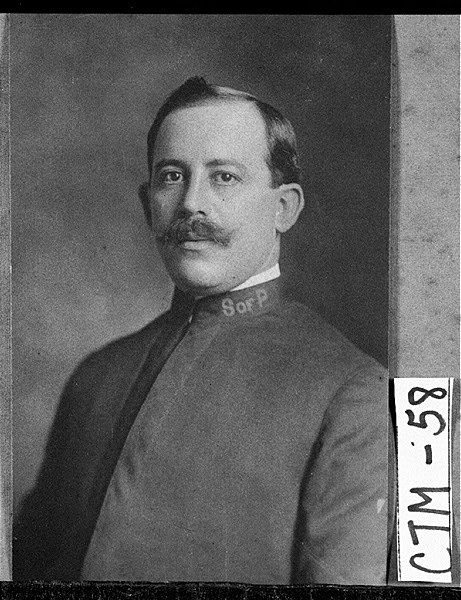
Beginning in the late 1940s, visiting the Rich’s Department Store in downtown Atlanta during Christmas became a beloved holiday tradition in Georgia.
Rich’s first placed a Christmas tree on the roof of its downtown location in 1948. The tree stood seventy five feet tall on the store’s crystal bridge over Forsyth Street. The lighting of Rich’s Great Tree on Thanksgiving night became a celebrated (and later televised) event in the decades that followed.
In 1953, the store introduced its famous “Pink Pig.” This children’s train ride originally rose above the toy department and featured a Priscilla the Pig train car, but was later moved to the roof, where it circled the Great Tree. After the ride, each child was given a “I Rode The Pink Pig” sticker.

Beginning in 1960, children could visit Santa’s Secret Shop on the fifth floor. The shop allowed them to pick out inexpensive gifts for their parents in secret, because adults were not allowed in. Visitors also frequented the store’s Magnolia Room restaurant, which was famous for its chicken salad and cheese straws.
The downtown Rich’s store closed in the early 1990s and the tree was temporarily relocated. Since 1999, Macy’s has held the Great Tree lighting ceremony on Thanksgiving night each year at their Lenox Square location in Buckhead. In 2003, the store introduced a new Priscilla the Pig, which continued to bring children joy during the holiday season. Macy’s retired the Pricilla the Pink Pig ride in 2021, ending a nearly a half-century of Georgia holiday tradition. To read more about the Rich’s Christmas experience, take a look at I Rode the Pink Pig: Atlanta’s Favorite Christmas Tradition, published by Hill Street Press with Rich’s-Macy’s in 2004. To see more historical images of Priscilla, you can visit the Digital Library of Georgia.




